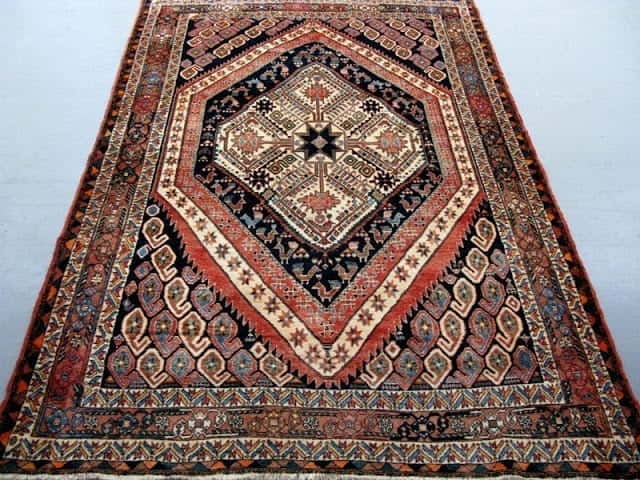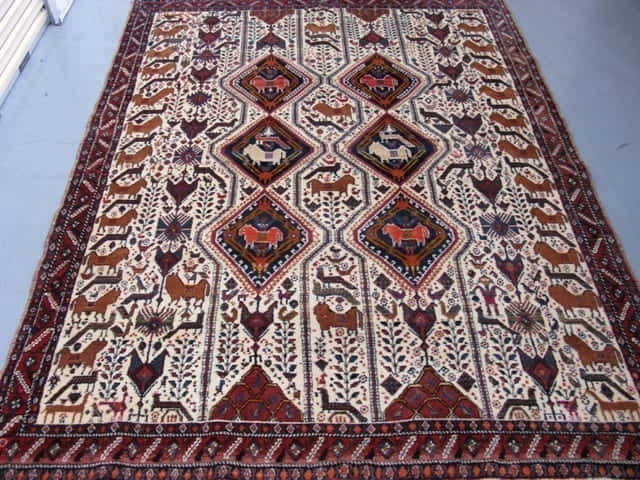- MON-SAT: 10AM - 5PM | SUN: 11AM - 4PM
- 1349-1353 High St, Malvern, VIC 3144
- (03) 9041 9995 | AH: 0412378798
- [email protected]

Carpets woven by Afshar tribe, who are believed to be related to the Kurdish nomads of old, were once forced to flee their homes due to an ongoing war between the Ottoman and Safavi Empires in the 15th century. With their lives at stake, they embarked on a treacherous journey deep into the south of Persia. One of these migrating tribes was the Afshar people, who traveled to Kerman province in search for a safe refuge around Shahr-Babak, Sirjan and Pardsir village.
The region that this nomadic tribe found was not only filled with greater safety but also great cultural diversity. The Afshars were able to integrate themselves throughout the area while still maintaining some aspects of their original culture, such as weaving carpets which they had been doing since ancient times. This ancestral art became firmly rooted in the region; it became so popular that it spread even outside its original borders and all over Iran and beyond.
The nomadic way of life has been part of the Afshar story since long ago. Their migrations usually take place during wintertime when temperatures become too cold for them in Kerman and they move further down south in search of warmer climate until April or May when they start returning back home again.
Additionally, they keep traditionally moving from one area to another depending on available resources like water or pastureland for their livestock. And during their frequent travels across regions, local communities slowly get accustomed to seeing them pass by regularly – assimilating with each other’s cultures whilst exchanging goods and services along the way.

Persian rugs have become renowned for their intricate designs and bold colours. As these pieces are often woven in the small villages of Marj and Paghaleh, many of them feature local motifs such as pine trees (sometimes even in mirror effect) as well as other animal figures like stylised peacocks, dogs, and goats.
These animals are usually depicted in shades of red, blue, green and black – however there is an additional significance behind when a weaver chooses to include a black goat. In this case, its purpose is to honour someone that has passed away within the family, acting as a memorial to those they have lost.
The influence of nature is evident throughout Persian rug weaving and can be seen through their portrayal of flora and fauna. For example, the intricate details of the pine tree design represent strength and resilience while animals like birds or goats symbolize grace and fertility – both essential elements for a thriving community.
In addition to this, colour plays an important role too; for instance red symbolises courage whereas green is associated with renewal or hope. Through their creative use of symbols along with vibrant hues, weavers have been able to create aesthetically captivating pieces that not only look good but also convey deeper meanings.

The intricate and beautiful carpets crafted by the carpets woven by Afshar tribe of Sirjan have been admired for centuries and are highly sought-after collector’s items. These exquisite works of art feature repeating hexagonal panels with stylised trees at the center and in between, often adorned with peacocks or other bird symbols.
The designs on these rugs are truly unique, as there is no workshop production from Sirjan and no other villages or towns where the Afshar people live. Each house in Sirjan usually has one or two looms actively weaving thick, colorful carpets that give the pieces a stiffer body and sturdier composition. Every carpet is handmade and takes several days, sometimes even weeks to complete depending on its size and complexity.
Collectors flock to purchase these stunning pieces of art due to their distinctive patterns, vibrant hues, and lasting quality that stands the test of time. Each carpet tells its own story, containing small details that narrate a brief tale about an ancient culture living in modern times.